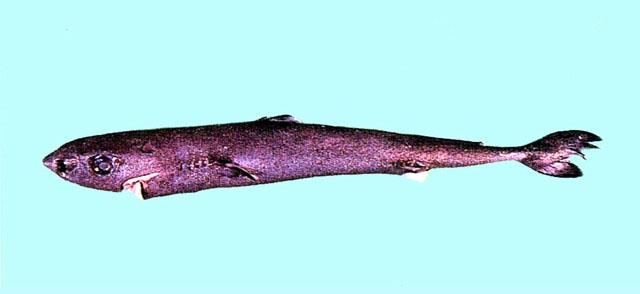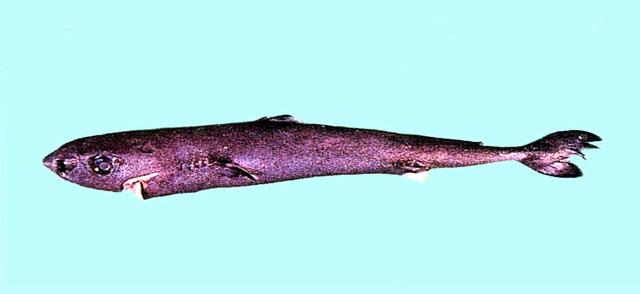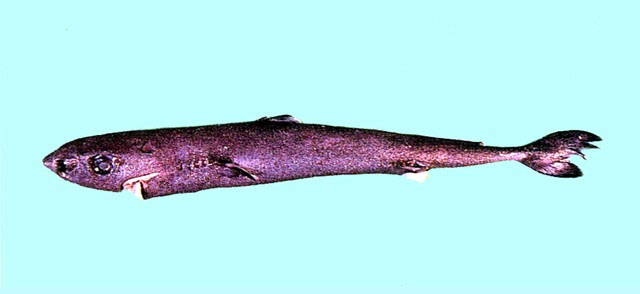The smalleye pygmy shark protects itself from predators below with light-emitting cells called photophores on its underside that blend its silhouette into light coming from the ocean surface.
This minute shark, Squaliolus aliae, only grows up to 22 cm long (nearly 9 inches). It appears to have a similar glowing mechanism to the velvet belly lantern shark, Etmopterus spinax, which uses glowing to communicate as well as for camouflage.
Three scientists collected smalleye pygmy sharks off Taiwan and injected various chemicals, including hormones and neurotransmitters, into skin samples to see which ones affected the regulation of bioluminescence.
They found that the skin glowed in the presence of melatonin, a hormone secreted in darkness that also triggers light emission in lantern sharks. However, there was no effect with neurotransmitters, which regulate bioluminescence in deep-sea bony fish.
Surprisingly, the hormone prolactin caused the smalleye pygmy shark’s photophores to dim, even though it triggers intense glowing in lantern sharks, which they use for communication via patches on their fins.
As prolactin inhibits light production in smalleye pygmy sharks, the team believes this means these dwarf sharks only glow for camouflage purposes.
The findings were published in the The Journal of Experimental Biology on April 26.







